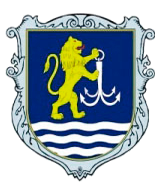COMPREHENSIVE STUDY OF CURRENT TRENDS IN “GREEN” SHIPPING
Abstract
Introduction. In our time, environmental standards for ships are becoming more stringent, so the shipping industry, which is one of the promising means of transportation that provides most of the World Trade, is also experiencing public pressure from the need to improve its work and take measures to reduce pollution. The latest trend in shipping is the so – called “Green navigation” – a complex of technological innovations that has led to the development of vessels, equipment and fuel that are more environmentally friendly. Purpose. Research and analysis of the possibilities of using new materials, improving the level of energy efficiency of the vessel, using modern efficient energysaving technologies in the creation of vessels, improving the ship’s power plants that meet the new requirements of environmental standards, reduce the amount of harmful emissions, environmental and alternative fuels, creating “eco-vessels”. Results. The main directions of solving environmental problems in navigation, which are aimed at reducing undesirable anthropogenic changes in the environment, are considered and studied. Conclusions. As a result of the research, the rationality of development in the field of creation and classification of new materials and technologies with the use of composites for both ship hulls and as multifunctional heat and sound insulation materials and coatings is justified; optimization of Hull contours with changes in the design and structural features of the vessel; the use of wind energy to increase the level of energy efficiency of the vessel; improvement of existing experience in the development and use of environmental and alternative fuels and reduce the negative impact of emissions from ships on the environment, as well as the construction of “eco-vessels” according to the principles of “green logistics”, which reduces waste and pollution throughout the production and supply chain.
Downloads
References
2. Скаридов А. С. «Зеленое судоходство» и проблема устойчивого использования морского транспорта. Международное право и международные организации / International Law and International Organizations. 2021. № 1. С. 31–45.
3. Ребрушкин М. Н., Васильев С. А., Пачурин Г. В. Повышение экологичности работы судов внутреннего и смешанного плавания. Фундаментальные исследования. 2012. № 6-1. С. 167–172.
4. Гуменюк Н. С., Грушин С. С. Применение композитных материалов в судостроении. Современные наукоемкие технологии. 2013. № 8-1. С. 116–117.
5. Мишкин С. И., Дориомедов М. С., Кучеровский А. И. Полимерные композиционные материалы в судостроении. Новости материаловедения. Наука и техника. 2017. № 1 (25). С. 60–70.
6. Kuperman A. M., Gorbatkina Y. A., Turusov R. A. High-strength reinforced plastics. Вестник Волгоградского государственного университета. Серия 10 «Инновационная деятельность». 2015. № 2 (17). С. 29–42.
7. Храмушин В. Н. Исследования по оптимизации формы корпуса корабля. Вестник Дальневосточного отделения Российской академии наук. 2003. № 1 (107). С. 50–65.
8. Францев М. Э. Проектные особенности зарубежных промысловых судов из композиционных материалов для прибрежного лова. Судостроение. 2010. № 5. С. 14–18.
9. Крючков Ю. С., Перестюк И. Е. Крылья океана. Ленинград : Судостроение, 1983. 256 с.
10. Крючков Ю. С. Механика парусного судна : монография. Николаев : Степь-инфо, 2005. 40 с.
11. Иванченко А. А., Петров А. П., Живлюк Г. Е. Энергетическая эффективность судов и регламентация выбросов парниковых газов. Вестник Государственного университета морского и речного флота имени адмирала С. О. Макарова. 2015. № 3 (31). С. 103–112.
12. Демидова Н. П., Марченко А. А., Онищенко О. А. Основные показатели судового топлива и их основные эксплуатационные свойства. Вестник Камчатского государственного технического университета. 2015. № 32. С. 6–11.
13. Карпенко А. А., Копцева Е. П. Перспективы перевода судов морского и речного транспорта на альтернативные виды топлива. Транспортное дело России. 2017. № 3. С. 63–66.
14. Экономические предпосылки использования СПГ в качестве моторного топлива: аналитический обзор. Транспорт на альтернативном топливе. 2018. № 6 (66). С. 25–30.
15. Хорошев В. Г., Попов Л. Н., Гатин Р. И. Перспективы использования альтернативных видов топлива в судовых энергетических установках. Труды Крыловского государственного научного центра. 2019. № 4 (390). С. 194–202.
16. Судовое топливо будущего. Сравнение и перспективы. URL: https://pro-arctic.ru/18/06/2018/technology/32545
17. Руководство по экологическим и социальным вопросам по отраслям для судостроения и судостроительных заводов / Европейский банк реконструкции и развития. 2011. URL: https://www.ebrd.com/downloads/about/sustainability/Shipbuilding_and_Shipyards_RU.pdf
18. От судоверфей к морям: зеленые тенденции в судостроении. MaritimeZone. 2010. URL: https://maritime-zone.com/news/view/greenfeatures-in-shipbuilding





